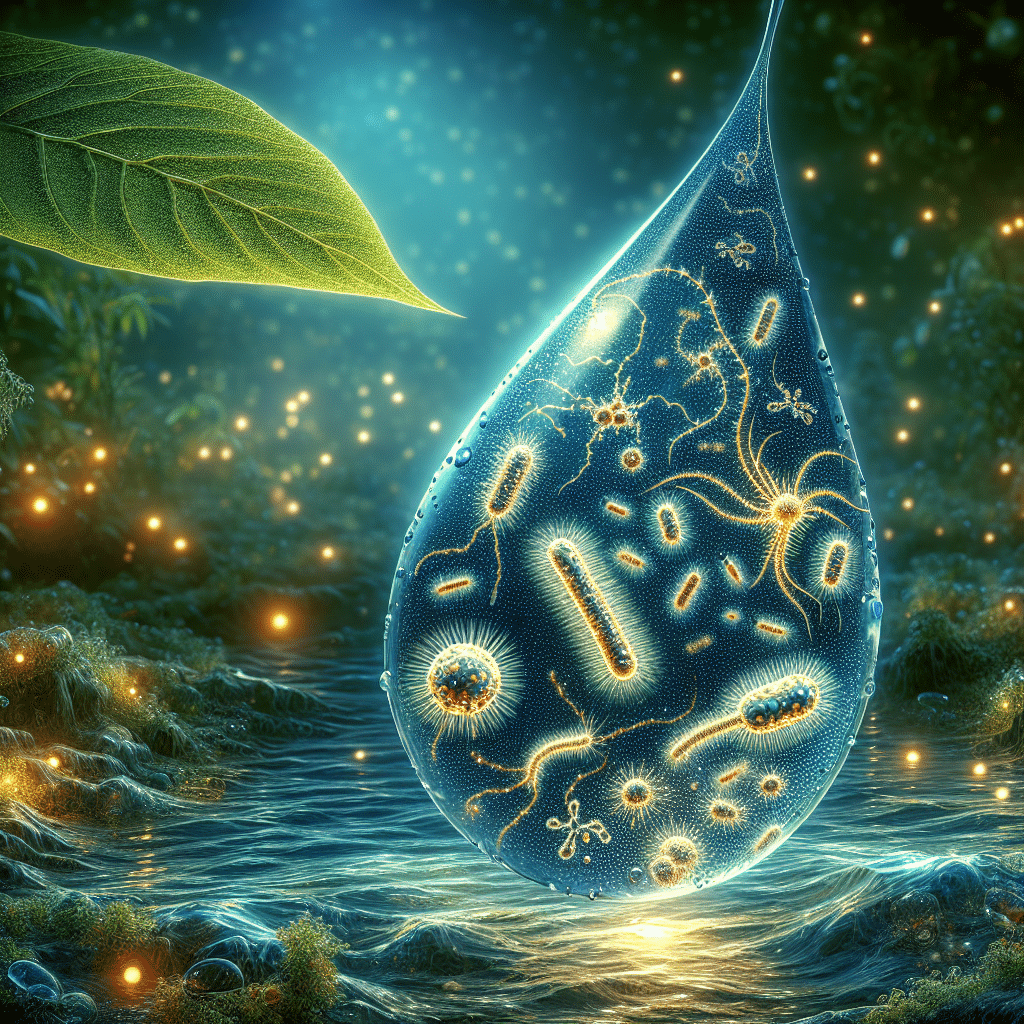Understanding the Dangers of Bacteria and Protozoa in Natural Water Sources
1. The Role of Water in Ecosystems
Natural water bodies, including rivers, lakes, and streams, are vital ecosystems that support diverse flora and fauna. They serve as critical resources for human activities, including drinking, agriculture, and recreational activities. However, these water sources can also harbor harmful microorganisms such as bacteria and protozoa.
2. Common Types of Bacteria in Natural Water
Bacteria are single-celled organisms that can live in nearly every environment, including water. Certain strains are beneficial, but others can pose significant health risks. The most concerning genera include:
- Escherichia coli (E. coli): A common inhabitant of the intestines of humans and animals. Pathogenic strains can cause severe gastrointestinal issues, leading to diarrhea, vomiting, and abdominal cramps.
- Salmonella spp.: Associated with various infections, Salmonella can contaminate water through animal waste, making it hazardous for recreational use.
- Vibrio cholerae: This bacterium causes cholera, a severe diarrheal disease often linked to contaminated water sources, especially in regions lacking proper sanitation.
3. Understanding Protozoa
Protozoa are microscopic, single-celled organisms that can also thrive in water. Some of the most harmful protozoa found in natural water sources include:
- Giardia lamblia: This flagellated protozoan is a leading cause of waterborne illness, causing giardiasis. Infection typically results from consuming contaminated water and can lead to long-lasting gastrointestinal distress.
- Entamoeba histolytica: Known for causing amoebic dysentery, this protozoan can be present in freshwater and poses severe health risks if ingested.
- Cryptosporidium spp.: Resistant to chlorine disinfection, Cryptosporidium can survive in water and cause cryptosporidiosis, leading to diarrhea, dehydration, and serious complications in immunocompromised individuals.
4. Pathways of Contamination
Understanding how bacteria and protozoa contaminate water is crucial for prevention. Common pathways include:
- Animal Waste: Runoff from livestock farms and wildlife deposits pathogens into waterways, especially after rain when runoff increases.
- Sewage Discharge: Untreated or poorly treated sewage can introduce a host of pathogens into natural water sources, especially in urban areas.
- Flooding Events: Heavy rains can lead to flooding, washing contaminants into drinking water supplies and recreational waters.
5. Health Risks Associated with Bacteria and Protozoa
The health implications of consuming or coming into contact with contaminated water can be severe:
- Gastrointestinal Illness: Common with both bacteria and protozoa, symptoms can range from mild discomfort to severe dehydration and hospitalization.
- Long-Term Complications: Some infections can lead to chronic health issues, such as irritable bowel syndrome or reactive arthritis, especially following infections with E. coli or Giardia.
- Vulnerable Populations: Young children, elderly individuals, and those with weakened immune systems are at higher risk for severe outcomes from waterborne pathogens.
6. Identifying Contaminated Water
Recognizing signs of contaminated water is vital for public safety. Be vigilant for:
- Unusual odors or flavors in drinking water.
- Changes in water color or clarity, indicating the presence of pathogens.
- Algal blooms, which can harbor toxins and signal the likelihood of pathogens.
7. Testing Natural Water Sources
To ensure safety, testing water quality is essential, particularly for recreational or drinking purposes. Common methods include:
- Laboratory Analysis: Sending samples to a lab can provide detailed information on bacterial and protozoan levels.
- Home Testing Kits: Available commercially, these kits allow for quick assessments of water quality, focusing on E. coli and other common pathogens.
8. Preventive Measures
Preventing exposure to harmful microorganisms requires multiple strategies:
- Water Treatment: Boiling water for at least one minute is effective for eliminating most pathogens. Use water purification tablets containing iodine or chlorine as an alternative.
- Filtration Systems: Invest in advanced filtration systems that target bacteria and protozoa, particularly in regions reliant on natural water sources.
- Hygiene Practices: Practicing good hygiene, including handwashing and proper food handling, minimizes the risk of pathogen transmission from water.
9. Recreational Water Safety
For activities like swimming, fishing, and paddling, consider the following safety tips:
- Avoid Swimming After Heavy Rain: Wait 24 to 48 hours post-rainfall, as runoff can significantly increase pathogen levels.
- Do Not Drink Non-Treated Water: Unless properly treated, avoid consuming water directly from natural sources.
- Look for Warning Signs: Heed local advisories regarding water quality, especially concerning algal blooms or confirmed pathogen outbreaks.
10. Legislative and Environmental Action
Governments and environmental organizations play an essential role in water safety:
- Regulation and Water Standards: Enforcing water quality standards ensures public health safety by monitoring contaminants in drinking water.
- Conservation Efforts: Protecting natural water sources through conservation efforts reduces the introduction of harmful bacteria and protozoa.
11. Community Awareness and Education
Educating communities about the dangers of bacteria and protozoa in natural water sources fosters responsible environmental stewardship. Initiatives may include:
- Workshops and Seminars: Organizing events to educate the public on water safety and hygiene practices can raise awareness.
- Community Water Testing Programs: Encouraging local efforts for regular water testing can empower individuals to take responsibility for public health.
12. Research and Innovations
Ongoing research into waterborne pathogens is crucial for developing innovative solutions to reduce the risks associated with contaminated water:
- Advancements in Filtration Technology: Development of new filtration materials and systems can enhance pathogen removal effectiveness.
- Genomic Studies: Understanding the genetic makeup of pathogenic bacteria and protozoa aids in the creation of targeted treatments and preventive measures.
References
- Centers for Disease Control and Prevention. (CDC): Resources on waterborne diseases.
- World Health Organization: Guidelines for drinking-water quality.
- Local health departments: Monitoring programs for recreational and drinking water safety.
Staying informed and proactive is essential in mitigating health risks posed by bacteria and protozoa in natural water sources.
